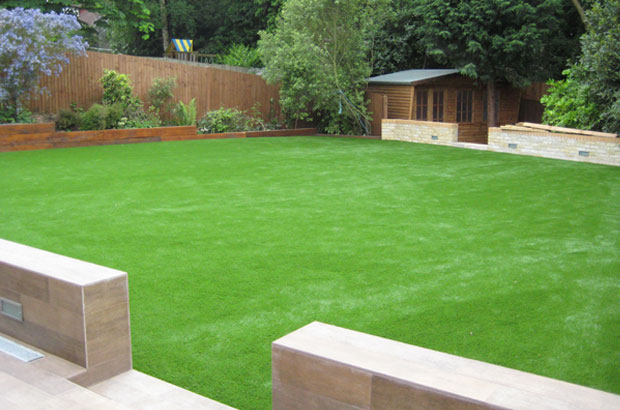How to Lay an Artificial Lawn

Artificial or synthetic lawns have become very popular in regions where grass cannot naturally grow. Laying an artificial lawn is rather time consuming and not an easy task by any means. Using some tools and a little patience, laying an artificial lawn can make a wonderful addition to your garden area.
Things Required:
– Bender board or extruded concrete curbing
– Base material
– Grading rakes
– Plate compactor or tamper
– Weed barrier materials
– Artificial turf
– Carpet style knife
– Carpet kicker
– Nails, glue, tapes, and stitching
– Staple or spikes
– Power-broom or nylon-bristled broom
– Silica sand, crumb rubber, or copper slag
– Leaf-blower
Instructions
-
1
Create about 3 to 4 inches of space to lay base material by getting rid of existing sod and surface. Border the area you cleared with a bender board or extruded concrete curbing. The border will ensure that the materials you will use stay in place.
-
2
Lay a uniform layer of appropriate base material. If you are laying the lawn in an area with soft natural soil, you will need to lay an additional compacted aggregate base.
-
3
Keeping in consideration the general grade of the area in which you are laying the lawn, grade the base with the help of a rake.
-
4
Use a plate compactor or tamper to thoroughly moisten and then compact the base material you used.
-
5
To avoid possible growth of weeds in the artificial lawn you are laying, put down weed barrier materials on top of the base material.
-
6
Lay the artificial turf. Be sure to keep all sections in the same direction. If desired, this is the time to cut a shape in the lawn with a carpet style knife.
-
7
Stretch out the turf to prevent expansion from heat using a carpet kicker. To hold artificial turf sections in place, use 4-6 inch long spikes or staples.
-
8
Use nails, glue, tapes and stitching to seam artificial turf sections to each other. Install spikes or staples on the entire perimeter of the lawn.
-
9
To make the artificial surface resemble a real lawn, broom the turf with a power or nylon-bristled broom.
-
10
Use silica sand, crumb rubber or copper slag to add infill to your artificial lawn. This makes the lawn more resilient to traffic as well as adds weight to surface so that you will not have to go through the trouble of perform maintenance work after short time durations.
-
11
Broom the infill you added into thatch with a power-broom. Complete the lawn by cleaning the surface with a leaf-blower.






